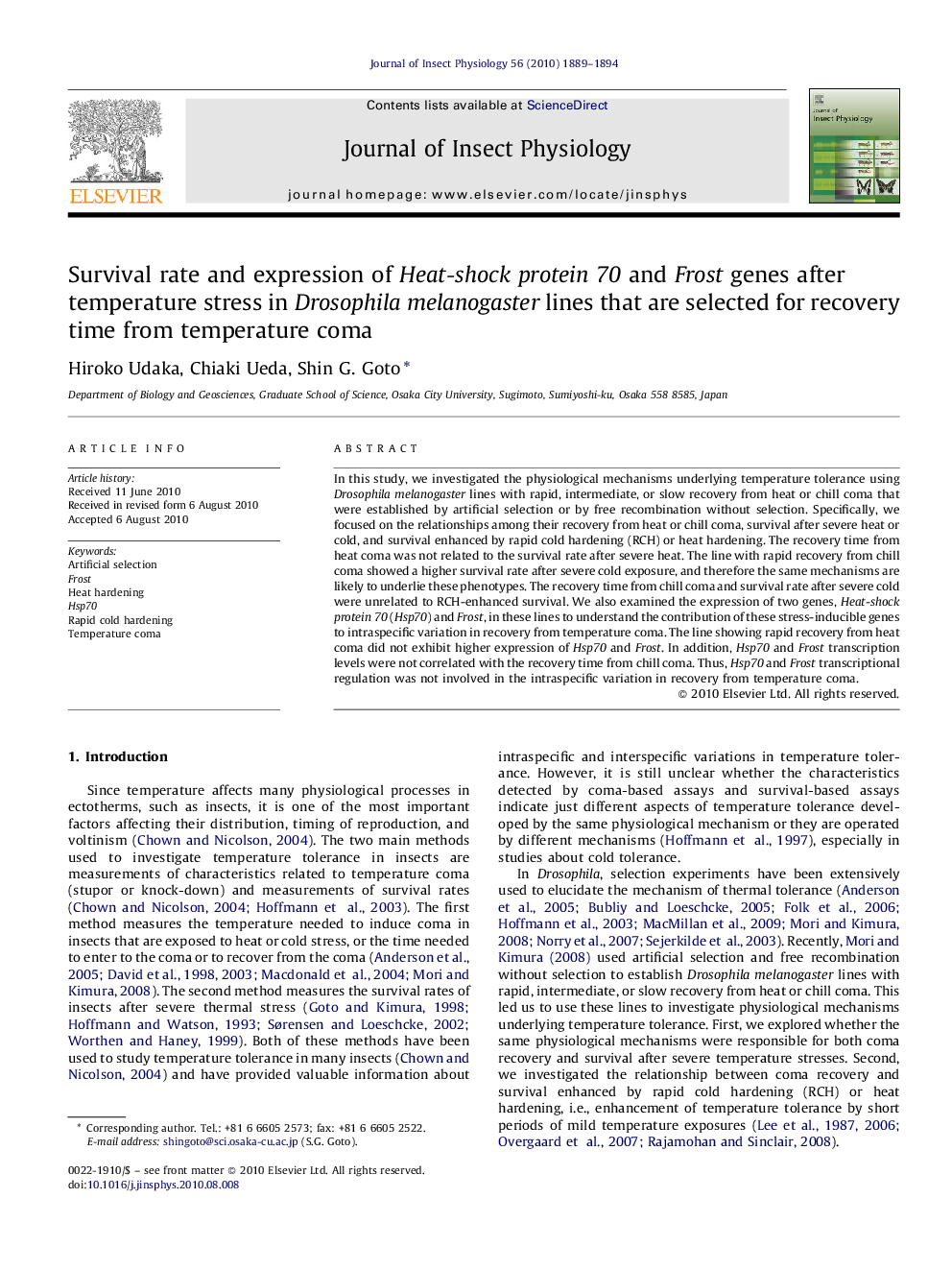| Article ID | Journal | Published Year | Pages | File Type |
|---|---|---|---|---|
| 5922088 | Journal of Insect Physiology | 2010 | 6 Pages |
In this study, we investigated the physiological mechanisms underlying temperature tolerance using Drosophila melanogaster lines with rapid, intermediate, or slow recovery from heat or chill coma that were established by artificial selection or by free recombination without selection. Specifically, we focused on the relationships among their recovery from heat or chill coma, survival after severe heat or cold, and survival enhanced by rapid cold hardening (RCH) or heat hardening. The recovery time from heat coma was not related to the survival rate after severe heat. The line with rapid recovery from chill coma showed a higher survival rate after severe cold exposure, and therefore the same mechanisms are likely to underlie these phenotypes. The recovery time from chill coma and survival rate after severe cold were unrelated to RCH-enhanced survival. We also examined the expression of two genes, Heat-shock protein 70 (Hsp70) and Frost, in these lines to understand the contribution of these stress-inducible genes to intraspecific variation in recovery from temperature coma. The line showing rapid recovery from heat coma did not exhibit higher expression of Hsp70 and Frost. In addition, Hsp70 and Frost transcription levels were not correlated with the recovery time from chill coma. Thus, Hsp70 and Frost transcriptional regulation was not involved in the intraspecific variation in recovery from temperature coma.
Graphical abstractDownload full-size imageResearch highlightsⶠDrosophila lines with different recovery time from temperature coma were established. ⶠThe recovery time from heat coma showed no correlation with survival after heat. ⶠThe line with rapid chill coma recovery showed a higher survival rate after cold. ⶠThe recovery time from chill coma showed no correlation with survival enhanced by rapid cold hardening. ⶠHsp70 and Frost do not contribute to the intraspecific variation in recovery time.
